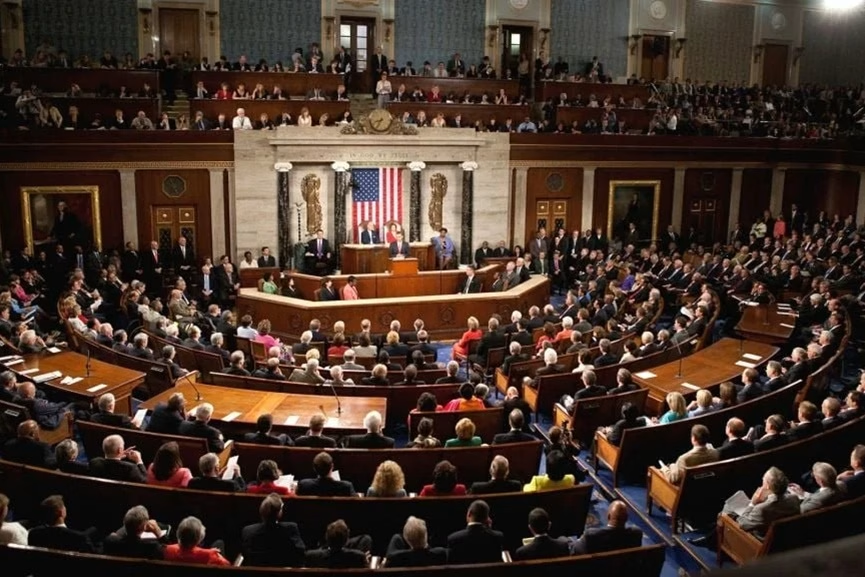Washington: The US Senate took a major step toward ending the longest government shutdown in American history, narrowly advancing a compromise bill to restore federal funding and reverse the layoffs of thousands of government workers.
The breakthrough came after weeks of tense negotiations between a small group of Democratic and Republican senators. The compromise measure authorizes government funding through January 30, 2026, reinstates furloughed federal employees, and guarantees back pay for all workers affected by the shutdown. It also prevents further layoffs through January and includes three appropriations bills covering departments such as agriculture and veterans affairs.
However, the bill leaves out healthcare subsidies under the Affordable Care Act—an omission that sparked strong opposition from many Democrats. They had pushed for weeks to extend the tax credits that help millions of Americans afford health coverage. Without the extension, premiums are projected to rise by an average of 26 percent next year.
Senate Majority Leader Chuck Schumer and several Democrats voted against the measure, calling it incomplete. “This healthcare crisis is so severe, so urgent, that I cannot in good faith support a resolution that fails to address it,” Schumer said before the vote.
Democrats have been fighting for months to address America’s healthcare crisis
For the millions who will lose coverage
For people with cancer who won’t get the care they need
For working families who can’t afford to pay $25K more a year for healthcareWe will keep fighting
— Chuck Schumer (@SenSchumer) November 10, 2025
The legislation received exactly 60 votes with nearly all Republicans in favor, joined by eight moderate Democrats. Republican Senate leader John Thune, who led the talks, said the deal was the best path forward to end the shutdown and reopen the government. He emphasized that discussions on healthcare subsidies would continue once funding was restored, promising a separate vote by mid-December.
“After 40 long days, I’m hopeful this shutdown can finally end,” Thune said, noting the strain on air travel and unpaid government workers. The shutdown, which began on October 1 after funding lapsed, has disrupted federal services nationwide, idled over 700,000 workers, and forced many more to work without pay.
The shutdown’s impact has rippled across the country, with food banks overwhelmed and federal aid programs halted. Air traffic has been severely affected, with Transportation Secretary Sean Duffy ordering reductions in commercial flights amid staff shortages.
.@POTUS: “It looks like we’re getting close to the shutdown ending. You’ll know very soon.” pic.twitter.com/Qp2qR1DeaF
— Rapid Response 47 (@RapidResponse47) November 10, 2025
More than 2,500 flights were canceled on Sunday, and further cuts are expected if funding is not fully restored soon. The bill now moves to the House of Representatives, which must approve it before it can go to President Donald Trump for his signature. But a rough road lies ahead. House Democrats have already voiced strong opposition, insisting that no funding bill should move forward without the ACA tax credits.
House Minority Leader Hakeem Jeffries said Democrats would oppose the ‘Republican-only plan’ that fails to protect affordable healthcare. Progressive lawmakers, including Representative Greg Casar, warned that accepting a vague promise on healthcare legislation amounts to surrender, not compromise.
House Speaker Mike Johnson, meanwhile, has kept the chamber out of session since September 19 in an attempt to pressure Democrats into accepting the GOP’s spending plan. With Sunday’s Senate action, House members are now expected to return this week to consider the compromise.

























